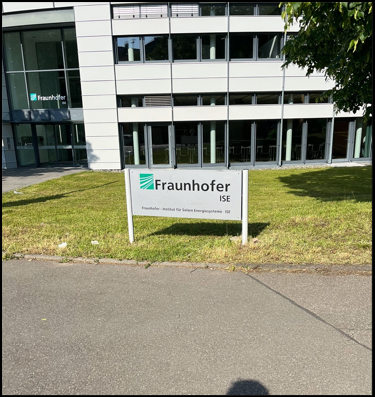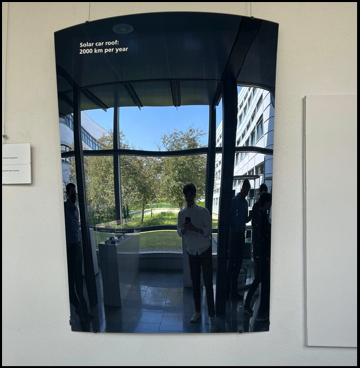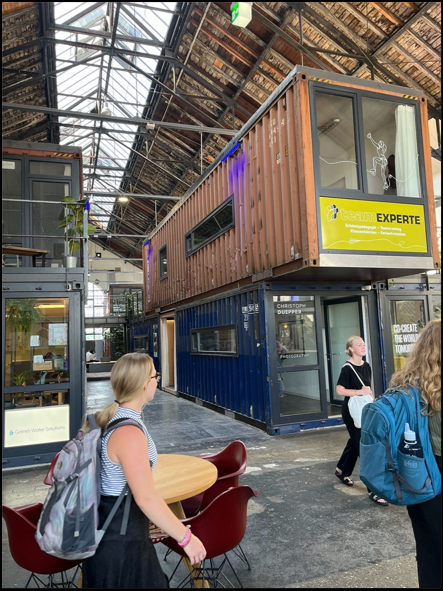Fraunhofer Institute for Solar Energy: Burch Cleantech Europe Tour
June 5, 2023
Today’s agenda centered around our visit to the Fraunhofer Institute for Solar Energy (ISE), the largest solar research institute in Europe. Our visit started with a presentation from Professor Dr. Bruno Burger discussing pathways to a climate-neutral energy system focusing on the energy transition and energy storage through data visualization.
There were three main points of emphasis that fascinated me during his presentation. First, Dr. Burger noted when Germany began to phase out nuclear energy, German citizens were worried that the loss of nuclear energy would increase fossil fuel production. However, the transition away from nuclear gave Germany a prime opportunity to push renewable energy sources into development and the market.
Second, Germany’s push for solar and offshore and onshore wind positioned Germany to develop and build renewable energy systems on a scale equivalent to a nuclear power plant at a much faster and cost-effective rate. Dr. Burger projects that if Germany continues to implement renewable energy systems at their projected rate, by 2030, Germany will have added 34 additional nuclear power plant equivalents of renewable energy, and 55 by 2035. Dr. Burger contextualized this projection by emphasizing that only a handful of nuclear power plants could be constructed in this amount of time.
Finally, Dr. Berger discussed strategies and projections on how Germany plans to decarbonize in the future. Some strategies included phasing out all combustion engines by 2045 through growing battery electric and H2 fuel cell vehicle accessibility, upgrading grid technology by implementing DC power lines, growing transmission interconnections between countries, and finding new and inventive ways to integrate solar in rural and urban areas.
After our presentation and discussion with Dr. Berger, we toured the Fraunhofer ISE campus. We were able to see the innovative solar technology Fraunhofer ISE was currently developing. The most interesting piece of technology we were introduced to was tandem solar. By stacking two solar cells on top of each other, each cell is able to capture a larger solar spectrum to make solar panels more efficient. We also saw a fill station for hydrogen fuel cell vehicles, which is using electrolysis to create hydrogen fuel. It is fascinating to see how hydrogen fuel cell technology is just starting to be implemented into commercial vehicles such as Toyota and Hyundai cars. In the last section of our campus tour, we saw Fraunhofer ISE’s newest building, which implemented green solar panels on the building. Fraunhofer scientists found a way to pigment solar panels while maintaining their efficiency. The colored solar panels sparked fun conversations within our group about creative applications for this technology such as creating solar art or a solar mosaic.

After our visit to Fraunhofer ISE, we walked to Grünhof to see unique office spaces made from shipping containers for a quick coffee and snack break. It was interesting to see how the office space incorporated greenery throughout the industrial building. The aesthetic of the innovation center was targeted toward millennial audiences.

We then enjoyed an evening at a local lake in Freiburg where we swam and ate dinner overlooking the lake and city.
About the Author
Levi Mellin, Environmental Studies, Class of 2025, Connect on LinkedIn
